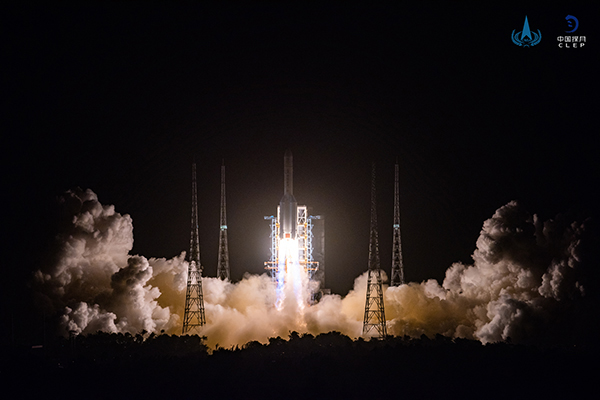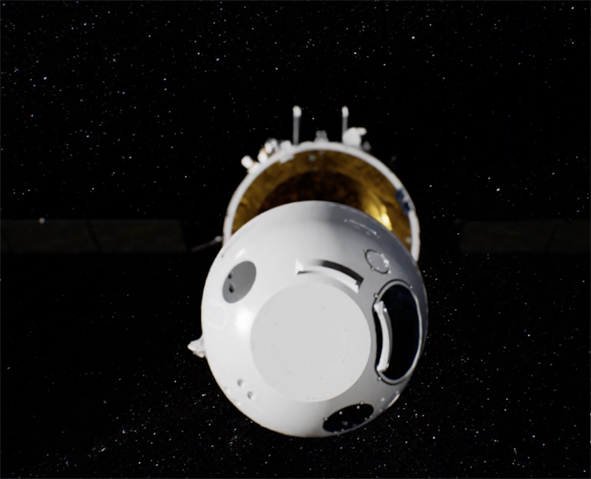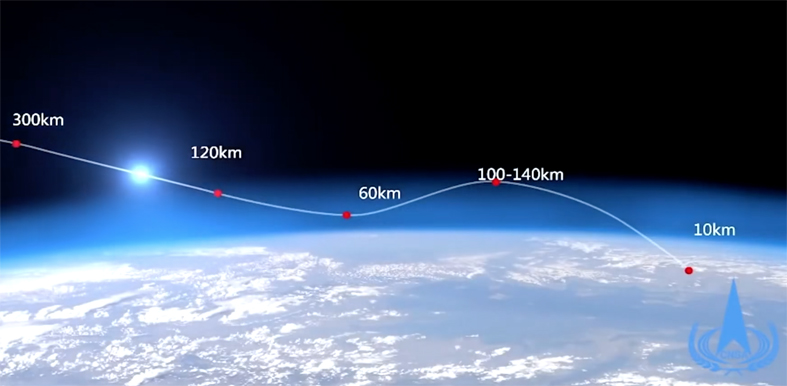By SONG Jianlan
Carrying the lunar samples collected and sealed by the lander-ascender complex, the returner capsule of Chang’e-5 (CE-5) safely touched down on the snowy prairie of Inner Mongolia, China at 1:59 am (GMT+8) on December 17, 2020. The safe landing of this well-awaited fairy marks the first return of lunar samples by humankind for 44 years, and heralds a new round of curiosity and inquiry about this close companion of our Earth.

CE-5, the concluding mission of the CLEP-I (Chang’e Programme), is successfully launched from the Wenchang Satellite Launch Center in Hainan Province, China early morning on November 24, 2020. (Credit: CLEP)
The successful return of CE-5 capsule marks the satisfactory completeness of the CE-5 space mission, which is the finale of the Phase I of China Lunar Exploration Program (CLEP-I), dubbed “Chang’e Programme” after a legendary fairy dwelling on the Moon in Chinese mythology. This program features a romantic trilogy – three stages of unmanned robotic missions, each stage respectively focusing on orbiting, landing on, and returning samples from, the Moon.
Launched early morning on November 24 from the Wenchang Satellite Launch Center in Hainan Province, China by the CZ-5 (Long March-5) Y5 rocket, CE-5 has travelled a long journey to return. To collect and return samples of lunar rocks and soils from around 384,000 km away via unmanned robotic maneuver – any instruction sent there via electromagnetic signals has to wait almost 3 seconds to get any response – the little fairy has to be “smart” enough to deal with the complicated situation on the site mostly by herself.
The whole world witnessed the full process of the space mission, including the launching; the Earth-Moon transfer; the navigation to the Moon; the orbiting before sending the lander to the predetermined location to the north of Oceanus Procellarum; the robotic roving, shoveling and drilling for, as well as sealing of the samples; the first unmanned blasting off and ascending from the lunar surface; the accurate docking between the ascender and the returner/orbiter complex on the lunar orbit; the Moon-Earth transfer of the returner/orbiter complex; the detaching of the returner from the orbiter around 5,000 km above the Earth ground; and finally, the big “dap” of the returner – after the first entry into the atmosphere at around 120 km above the Earth surface, the capsule was “dapped” back to the outer space to consume extra kinetic energy and slow down to an acceptable speed for a second entry – to avoid being burnt out by unbearable heat on the way home. Every tuning of the thrust matters so much; and every step in progress means a lot.

Illustration of CE-5 returner detaching from the orbiter (Computer animation by CASC)

Computer simulation of the big “dap” of CE-5, a bounce back to outer space after the first entry into the Earth atmosphere. This smart maneuver aims to consume extra kinetic energy and slow down to an acceptable speed for a second entry, so as to avoid being burnt out by the excessive heat produced by the friction between the overspeed capsule and the air. (Animation by CASC)

The trajectory of CE-5 returner when entering the Earth’s atmosphere (Credit: CNSA)
Now she is home safe and sound, eventually.
In just half an hour after the landing, the returner was picked up by a searching team, guided by the location forecast given by the console. Carefully protected from the cold weather with warm pastes, the capsule was soon escorted to the China Aerospace Science and Technology Corp (CASC) in Beijing. On December 19, the lunar samples inside were carefully extracted and delivered to the Chinese Academy of Sciences (CAS) for analysis and research, unfolding a new chapter of the mission.
Scooped from a lunar area no man-made aircraft has ever set a foot on, the samples have interested many scientists. The analysis and research of the samples might offer insights into a series of scientific questions, including the origin and evolution of the Earth-Moon system.

The vessel containing lunar samples is being processed at the lunar sample laboratory of NAOC. (Credit: CCTV)
The majority of the samples will be stored at the National Astronomical Observatories of China, CAS (NAOC), where scientists will hit the ground running for scientific research aimed at the scientific objectives of the mission, which are exactly initiated and refined by CAS. To make sure the treasurable samples will be properly processed and stored without losing their scientific value, NAOC has developed a set of technologies for their long-term storage, and has built a special laboratory for their processing, analysis and research.
Approved and accepted in 2011, the scientific objectives of CE-5 mission mainly encompass two aspects, namely the in situ investigation and analysis of the landing site, and the examination and analysis of the returned samples. The former mainly involves the topographic exploration and geological background investigation on the site, to obtain data about the sampled lunar rocks and soils necessary for later analysis to establish connections between the extracted samples and their in situ environments. The latter involves systematic, long-term lab analysis and research of the samples, to understand the structure, physical properties, chemical compositions of the lunar soils, so as to deepen our understanding of the origin and evolution of the Moon.
Specifically, the analysis of the samples returned by CE-5 will yield some new insights into background characteristics of the landing site, the formation and evolution of lunar soils, the physical-chemical characteristics of lunar rocks and soils, and lunar geochemical evolution.
The Academy not only proposed the scientific goals of and the layout for CLEP, but also sees to its implementation with support from its affiliate institutes spreading across the country. Represented by NAOC, the National Space Science Center (NSSC), CAS, and the Shanghai Astronomical Observatory, CAS, a total of 14 CAS institutions directly participate in the CE-5 mission, taking charge of R&D of the ground application system, the onboard scientific payloads, the precise orbit determination with its Very Long Baseline Interferometry (VLBI) network, and the engineering support system as well as related key modules. The Academy is also the main player in the analysis of the scientific data.

